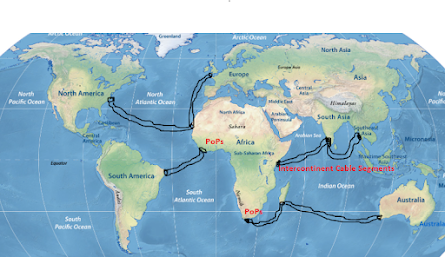Technology & Big Data in Infrastructure Investment Planning
Infrastructure plays a critical role in driving several sectors of the economy. Social infrastructure like schools helps educate the next generation while Hospitals keep us healthy. Economic infrastructure like roads, power lines, railways, telecommunications drive the economic transformation of society. However, in Africa we have an infrastructure-financing deficit, to the tune of $100bn annually as per the African Development Bank (AFDB) projections. Countries in Africa are not able to absorb this funding gap due to fiscal/budgetary limitations, lack of local financing, an inadequate or an undeveloped stock market et al. In the face of these realities, governments have to work with development partners and international private investment vehicles to attract the finance necessary to deliver the above infrastructure to society in a cost-efficient manner.
Country Demographics and Infrastructure planning
A meticulous planning approach for social and economic
infrastructure can be analogized by using the life expectancy metrics of a
country. This is illustrated in the schematic below;
Figure 1: Different stages of the human Life Cycle
As seen above, a human being goes through different stages in life, from birth to adulthood to old age, and in each stage requires a specific kind of infrastructure, whether that be a hospital, a school, a sports facility, transport facility, a utility, a care home etc. In all stages, we also require to eat, drink water, and to breathe uncontaminated air to maintain a healthy lifestyle. Therefore, by determining the population numbers and transition frequency across age groups, by gathering climate and environmental data, we can arrive at realistic infrastructure investment requirements for hospitals, schools, housing, road and rail networks, industrial zones and a precise, evidence based plan of action incorporated into the country budgetary framework.
De-risking Infrastructure Investments with Technology
& Big Data
Big data is a term used a lot today in relation to the
digital economy. It can be defined as a multiplicity of information datasets
collected, analyzed and utilized in varying scenarios in a multi -sectoral
ecosystem. Harnessing it, and more importantly, translating it into precise
country, town, city, municipality metrics is very critical in planning diverse,
climate resilient infrastructure
programs. Big data and technology create that enabling platform that supports
the planning of public transport, Utilities like Water and Electricity,
Housing, Health & Welfare, Education, Agriculture etc as shown in Figure 1
below. Sector regulators, policy makers, and industry players must therefore
embrace it, especially when making key strategic decisions.
Agriculture Sector Example
Health Sector Example
By using demographic data on population numbers across different age groups, climate data and epidemiology data on diseases we can use technology metrics to precisely determine quantities of vaccines or drugs needed for populations , the number of hospitals to be built, the workforce in terms of qualified medical personnel, forecast epidemics and design proactive remedial measures.
 |
| Figure3: Big Data in the Health Sector |
These two are just examples that demonstrate the increasing
importance that technology offers in feasibility assessments, in monitoring and
evaluation across all sectors of society.
Satellite and Drone imagery
– We can collect and apply analytics on
aerial data about land use and existing physical assets in areas of interest
using remote satellite sensors and drones to make route plans for new roads,
define right of way for water or fibre lines, determine housing numbers to inform
planning decisions. Access to this data
also enables engineers and technologists to have proactive asset maintenance
plans so the predicted revenue flows are not affected by downtime or unplanned
outages.
Internet
of things (IoT) - IoT together with cloud computing provides very useful
datasets critical for planning smart cities, transport/highway corridors, smart
metering in the utilities sector and defining, implementing strategies to avert
averting climate change through verifiable, real-time environmental and climate
data.
Geographical Information Systems (GIS), Computer
aided design (CAD) software tools – These are especially useful for generating infrastructure
plans in several dimensions based on specific use case scenarios in all
infrastructure sectors. Such plans also form part of a digital library that can be referred to from time to time
especially when upgrades of an asset or critical maintenance is required.
Crowd Data Sourcing model
– This is a new subscription based
method being used today for collecting useful data used in making informed
planning decisions from Open Sources and established technology power houses like google, Facebook etc.
Machine learning, Virtual models &
the emergence of digital twins – By
using advanced predictive analytics, we can simulate, model and forecast demand
across sectors, or predict maintenance schedules via generation of what we call
digital twins. A digital twin is simply a real-time virtual simulation of a
physical environment setting, a process or a situation. This helps engineers
and investors in making informed decisions about the viability and de-risking
of an investment.
Public Private Partnerships (PPP) Investment
Vehicle
Governments and public authorities can use PPPs to attract
long-term finance to bridge the funding gap for infrastructure projects in
Africa. The success of this partnership however depends largely on a risk
sharing mechanism that delivers value for money, net economic benefits to
society and a return to investors. Technology plays a central role in
de-risking investments through meticulous data collection and analysis
necessary for sound project preparation and feasibility studies, the generation
of base case scenarios as well as monitoring and evaluation of sector indices.




Comments
Post a Comment